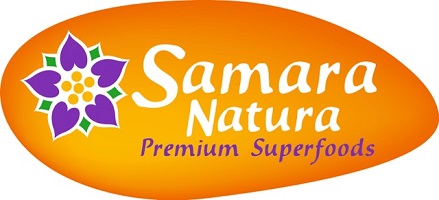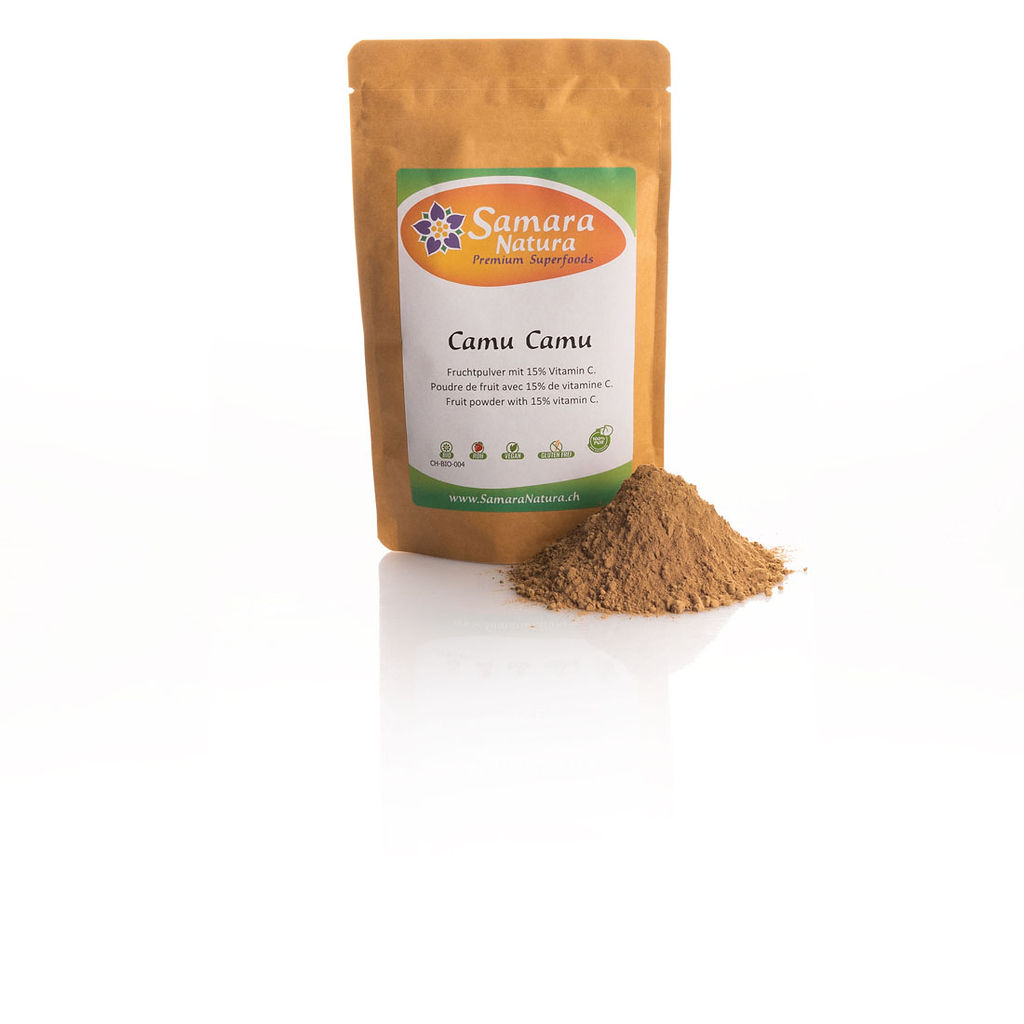Filter products
–
Strengthen your immune System
Average rating of 5 out of 5 stars
Weight :
100g
Update: Sale of the current batch with MHD 28.02.2026 with 50% discount. The new batch will be available from 12/12/2025.
Camu Camu (100% natural) powder with 15% vitamin C content
Why consume Camu Camu powder?
Camu Camu contains 2-3g of vitamin C per 100g of fresh fruit and about 10-12g per 100g of dried powder. This may not seem like much compared to synthetic vitamin C supplements, but the vitamin C in camu camu is a naturally occurring, highly bioavailable form and works synergistically in the body to maximise its benefits
The camu camu fruit has the highest documented natural vitamin C content of any food on earth
Compared to oranges, Camu Camu provides 30-60 times more vitamin C, 10 times more iron, 3 times more niacin, twice as much riboflavin and 50% more phosphorus!
We have found that Camu Camu energises, builds and improves mood. It helps us to stay active and in a good mood throughout the day. A pretty amazing effect for such a small berry
We all know about the high health value of vitamin C, and since camu camu exists, we can completely do without artificial, synthetic forms. For people like us, who are always on the lookout for what nature has to offer, this is a blessing
The berry is 100% natural and a powerful, highly concentrated food
Due to its natural origin and in combination with other vitamins, minerals, bioflavonoids and amino acids, the vitamin C contained in camu camu is fully absorbed by the body, which is not the case with synthetic vitamin C
What makes our camu camu powder special?
SamaraNatura Camu Camu grows wild in the Peruvian Amazon. The berries are harvested directly in boats equipped with freezing systems. The boats travel along the waterways of the Amazon, where the fruit is picked and shock-frozen when fully ripe. The fruit is then thawed, peeled, liquefied and spray-dried in a processing plant
The resulting powder is pale pink to yellow-brown in colour and contains powerful ingredients. We receive our camu camu in the form of a pure, unadulterated powder with an orange-light brown colour
It takes around 15kg of berries to produce 1kg of powder, which contains 10-12 per cent vitamin C by weight. Therefore, you only need a small amount to get an effective dose of antioxidants
Camu camu powder: frequently varying vitamin C content
We would like to point out that the vitamin C content of camu camu powder varies greatly. For example, there are also camu camu powders with only 5-6% vitamin C.
When making a comparison, pay attention to the vitamin C content, as the lower the content, the cheaper the product should be.
Influence on the sustainable development of the Amazon basin
We also like the fact that the growing popularity of camu camu contributes to the sustainable development of the Amazon basin and helps the locals to maintain their traditional lifestyle.
How to use camu camu powder?
Like other superfoods, camu camu is very easy to use. Simply mix the powder into your morning smoothie or an afternoon pick-me-up drink.
Camu camu has quite an acidic flavour, although it does not have an acidifying effect on the body and is gentler on the stomach than synthetic ascorbic acid. It therefore tastes best when mixed with other ingredients.
Add about a quarter to half a teaspoon (2-3g) to juices, smoothies, ice creams, raw desserts or simply in your drinking water. It's a great way to balance the sweetness of fruit smoothies and desserts.
Tip: Camunade is a refreshing drink that gives you a good vitamin C boost. Simply sprinkle a teaspoon of Camu Camu into a glass of cold water (sparkling or still), add a squeeze of lime juice and some sweetener (e.g. agave or yacon syrup) and shake briefly.
You can increase the daily amount if necessary (spread the intake throughout the day), but diarrhoea symptoms indicate an excessive intake of camu camu.
Nutritional values of organic Camu Camu per daily portion (3g)
Energy value 11 kcal/46 kJ,Fat 0.03g,Carbohydrates 2.5g, of which sugar 0g,fibre 0.2g,protein 0.16g,330mg vitamin C (314%*)
All information is subject to the usual fluctuations for natural products.*The recommended daily intake of approx. 105g according to the DACH reference value. The DACH reference values for nutrient intake are published jointly by the German, Austrian and Swiss nutrition societies. The abbreviation DACH is derived from the usual country codes for Germany (D), Austria (A) and Switzerland (CH).


